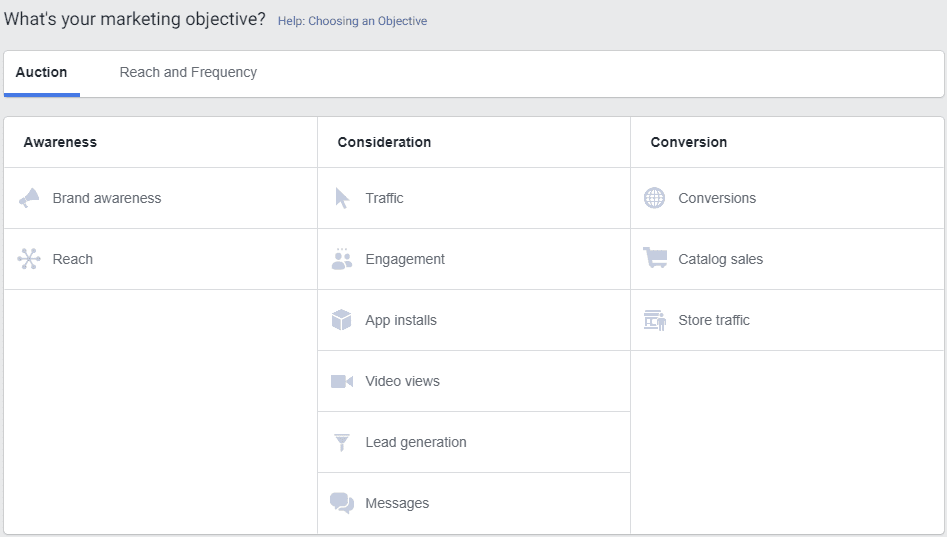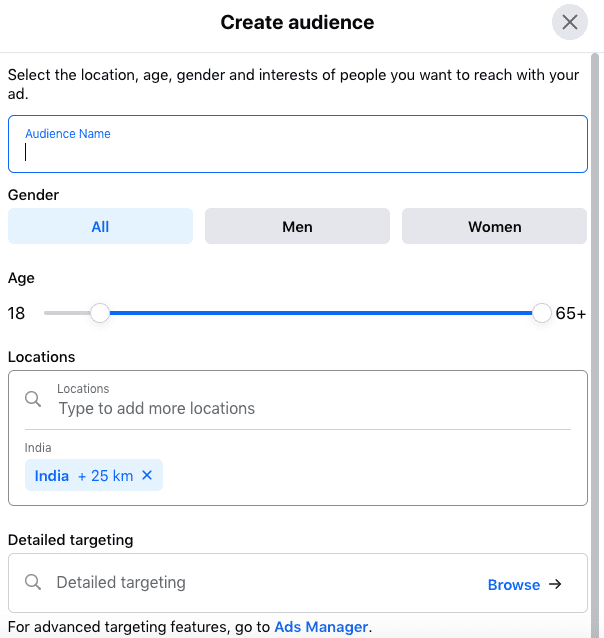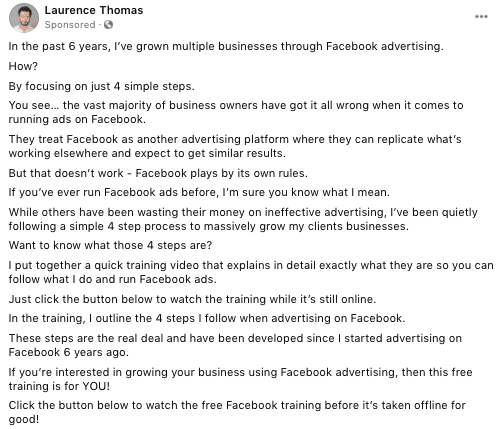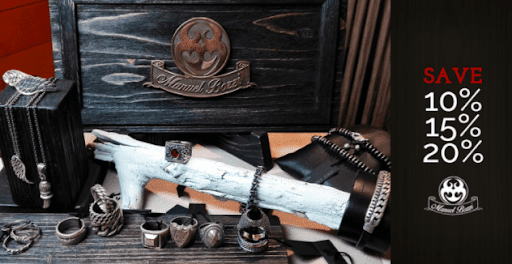6 Steps How To Create Facebook Ads That’ll Engage Your Target Audience
When Facebook changed its algorithm again, it appeared to be game over for organic traffic. However, it also meant that if you could create better ads that actually engaged your audience, your ads (and page) would get seen by more people.
Paying for ads, of course, costs money. If there’s no ROI, you’re going to be left super frustrated! And due to the rise in competition between advertisers Facebook, simply running an ad with a nice offer doesn’t guarantee results.
In this article, we’re going to help you avoid wrecking your ad budget for zero results. Join us as we go over exactly how to create Facebook ads that’ll engage your audience step-by-step.
Determine What Your Goals Are
There’s no use running an ad before you’ve decided what your ultimate goals are. Goal setting gives us something to aim for. And when we have something to aim for, we can more easily gauge whether or not an ad has been successful.
For instance, if you want to generate more leads, your goal could be to land 20 new leads in the first week. Or, maybe you just want to increase more traffic to your website from social media or increase downloads.
Whatever your goal is, Facebook lets you choose an objective:

There are currently as many as 15 objectives in total that you can pick from, and they include increasing your reach and brand awareness, driving conversions and collecting leads.
What’s really cool is that Facebook actually separates each objective into one of three categories:
- Awareness
- Consideration
- Conversion
Each one represents a different stage of the buyer’s journey (sales funnel). So if you’re not sure what your goal is, consider whereabouts in the funnel your target audience is currently. Have they ever interacted with your brand before? If they haven’t, they’re at the top of the funnel (awareness). If they have, but they’ve still got other options to weigh up, they may be in the middle of the funnel (consideration). If they’ve already interacted with your brand a few times, they’re now at the bottom of the funnel (conversion).
Once you’ve settled on a goal/objective, it’s time to name your campaign and then move on to the next step.
Define Who Your Target Audience Is

Defining your target audience will help you to optimize your ads so that they strike a chord with the right people. It’s a key step, but with more than 2 billion active users each day on the platform, how do you narrow down your audience?
Fortunately, it’s pretty simple, and Facebook gives you a handful of demographics to customize:
- Location
- Age
- Gender
- Languages
- Interests
- Behaviors
- Connections
The “connections” setting also lets you pick “advanced targeting,” while you can customize your audience even more by creating and choosing “custom audiences.”
You can choose to either narrow your reach or broaden it. However, Facebook themselves recommend that you narrow your reach because this will maximize your ad’s impact.
Here’s how you could do it if you were selling a digital marketing course:
Location: America
Interests: Marketing
Excluded: Those already in an executive digital marketing position
Age: 18+
Language: American-English
Naturally, you will need to understand your customer persona before you create your audience. A customer persona is a quasi-fictional individual who represents your target buyer. The makeup of this persona should be based on the data you’ve already collected from your market research.
Here’s what a customer persona might look like for an online dating guide aimed at men:
Demographics
- David
- Personal trainer
- Age 28 – 35
- $35,000 a year
- Urban location
- College degree
- Single, no kids
Goals and Challenges
- Save him time
- Show him how to succeed the easy way with online dating
Now that we know what David looks like, we can create compelling copy that speaks to him.
Also, your customer persona will inform your Facebook audience, as well as the type of ad you run. Each time you create a new Facebook Audience, it’s recommended that you save it so that you can just make tweaks with each new ad you run. To save your audience, you need to head over to the “audiences” tab and click “create a saved audience.” Or, you could just save it there and then as you go along.
Choose an Eye-Catching Image
Images sell. They’re the most visually eye-catching component of your ad. This means it’s essential that you choose one which is going to engage your audience.
You should, of course, test multiple creatives (more on this below). Here are some more tips:
- Always use high-resolution images
- Show people using your product
- Keep things simple
- Add text overlays if it works. Like this:

- Add numbers when possible. Like this:
Nail Your Headline
Alongside your image, your headline is the first thing people will see from your ad. In fact, it’s often the case that users will only read the headline before deciding whether or not they want to click your link. This is why nailing your headline is so important.
To increase engagement, you need to use the space you’ve got well. See, optimal Facebook headlines have between 25 and 45 characters, which isn’t a lot. Moreover, Ad Espresso ran a study and found that just FIVE words are the perfect amount. It isn’t many but here’s what you can do with those five words for maximum engagement:
- Use numbers – People love to see evidence that what you’re offering them works. If you can write something like “this course has a 78% success rate” in your headline, you will instantly grab people’s attention
- Address the reader – There’s nothing like speaking directly with the reader by writing “you” in your headline
- Be emotional – Ads that elicit emotions in the reader score well on Facebook. If you can tap into your audiences strongest emotions and desires (refer back to your customer persona and consider what they’re missing in life), you’re onto a winner
Write Engaging Copy
The key to a great Facebook ad is an engaging copy. If you can speak to your audience in a way that resonates with them, you’re halfway there to success.
- Image (or video)
- Headline
- Body copy (ad text)
- CTA
- Offer (link)
When writing your copy, always keep in mind the evergreen advertising formula AIDA, which stands for Attention, Interest, Desire, Action.
For example, you can use your image to grab someone’s attention. Then, you can use your headline to pique their interest before ramping up their desire with your body copy. Finally, you need to end your ad with something you want them to do, such as “click here to grab your free copy now.”
Here’s an example of ad copy that increases desire using the AIDA formula:

Sometimes, you could just go with concise bullet points that sell your key benefits:
Test, Test, Test
The only way to know if an ad works (and is engaging your audience) is to perform tests. The great thing about Facebook ads is that it’s really easy to measure your results, and it’s also really quick. Within just 24 hours, you could know whether an ad is working or not.
Split testing is probably the best way to go about this. Split testing is when you create different variations of the same ad (for example, you could put an image with a text overlay versus an image without a text overlay) to see which performs best.
When testing your ads, make sure to use Google Analytics alongside Facebook’s data, as this will give you a more accurate representation of your results. Be realistic about expectations, too. If your goal is lead generation and your audience is thus still at the awareness stage, don’t go into this expecting massive results straight away.
Of course, running ads is a numbers game. If there are areas your ad can be improved, get to work. The idea is to test and then tweak so that your ads engage your audience.
Conclusion
There are lots of ways to create a successful Facebook ads campaign, but you must work at engaging your audience first and foremost. Use the tips in this article to achieve higher engagement. Once you start to see results, consider increasing your budget so that you’re able to scale your ads, reach more people – and clinch more conversions.
We hope you enjoyed this post in collaboration with Binh An Nguyen.











